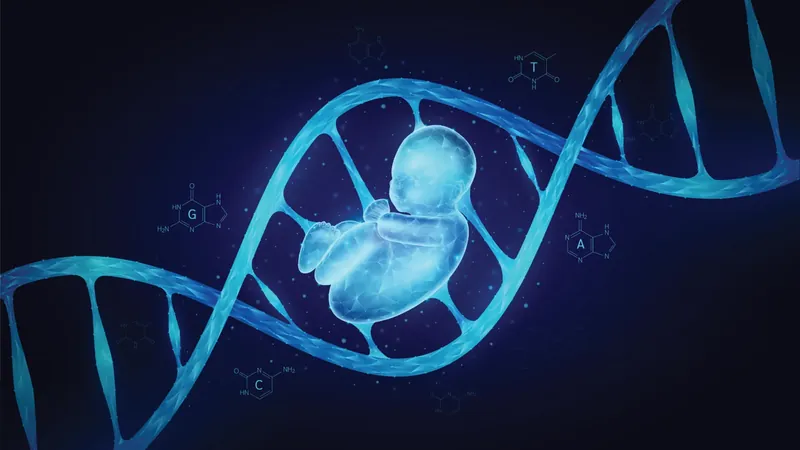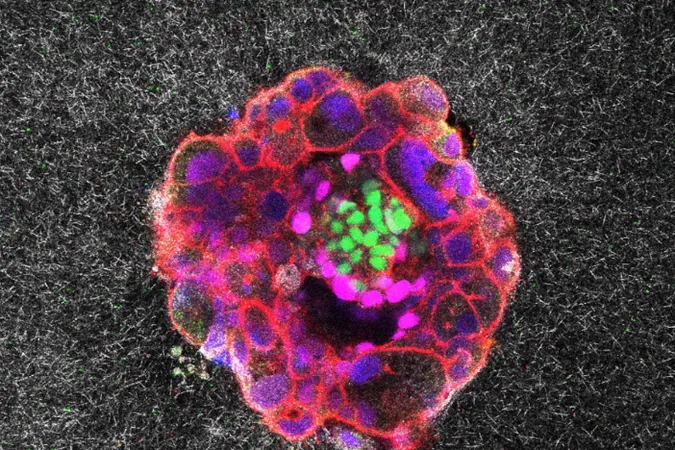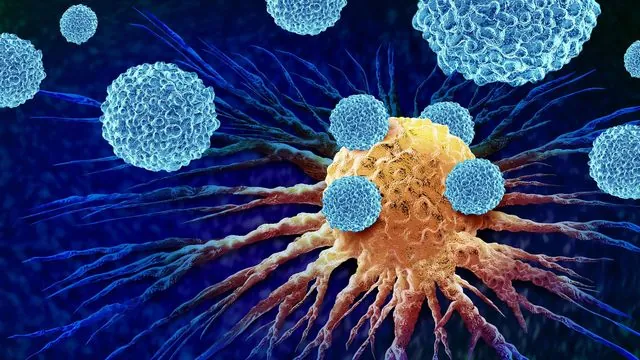
Unlocking Pregnancy's 100-Million-Year Mystery: The Evolution of the Placenta
2025-07-06
Author: Noah
A Remarkable Evolutionary Breakthrough
Pregnancy, particularly the ability to sustain a fetus long enough for full development, is a monumental evolutionary milestone for placental mammals, including humans. At its heart lies the fetal-maternal interface: the intricate space in the womb where a fetus's placenta interacts with the mother's uterus. This interface is a delicate balancing act, simultaneously facilitating nutrient and signal exchange while protecting the fetus from the maternal immune system.
Mapping the Cellular Landscape of Pregnancy
To uncover the origins and mechanics of this vital structure, scientists conducted a groundbreaking analysis of single-cell transcriptomes—genetic activity snapshots from individual cells—across six mammalian species. This diverse group included rodents like mice and guinea pigs, primates such as macaques and humans, and unique mammals like the tenrec and the opossum.
Revealing a Cellular Atlas
The research focused on the fetal-maternal interface, allowing scientists to trace the evolution and variation of key cell types. The spotlight was on placenta cells, which invade maternal tissue, and uterine stromal cells, which respond to this invasion. Remarkably, the team uncovered a genetic signature linked to the invasive actions of fetal placenta cells that has endured for over 100 million years—debunking the myth that such invasive cells are exclusive to humans.
The Dialogue of Cooperation and Conflict
The study tested two key theories about how mother and fetus communicate at the cellular level. The 'Disambiguation Hypothesis' suggests that hormonal signals adapted over time for clarity between mother and fetus. This was confirmed as distinct signals, such as WNT proteins and steroid hormones, were traced back to specific sources.
Conversely, the 'Escalation Hypothesis' presents an image of an evolutionary tug-of-war, where maternal and fetal genes compete. This was evident in genes like IGF2, which influences growth. However, overall findings lean towards a sophisticated cooperative signaling system.
A New Perspective on Mother-Fetus Dynamics
Lead author Daniel J. Stadtmauer emphasizes, 'Evolution may have favored more coordination between mother and fetus than previously thought.' He suggests that rather than framing pregnancy as purely a struggle for power, we should ask where and how conflict arises.
Revolutionary Tools for Evolutionary Insights
The team utilized cutting-edge techniques—single-cell transcriptomics combined with evolutionary modeling—to unlock new insights into the evolution of biological systems. This innovative approach allows researchers to simulate cellular communications across species and visualize the evolutionary journey taken over millions of years.
As co-first author Silvia Basanta states, 'Our method opens new avenues for understanding the evolution of complex biological systems—from individual cells to entire tissues.' This study not only enhances our understanding of pregnancy evolution but could also pave the way for advancements in diagnosing and treating pregnancy-related issues.
Research Support and Collaborative Efforts
Conducted in the labs of Mihaela Pavličev at the University of Vienna and Günter Wagner at Yale University, this research received support from esteemed institutions such as the John Templeton Foundation and the Austrian Science Fund (FWF).









 Brasil (PT)
Brasil (PT)
 Canada (EN)
Canada (EN)
 Chile (ES)
Chile (ES)
 Česko (CS)
Česko (CS)
 대한민국 (KO)
대한민국 (KO)
 España (ES)
España (ES)
 France (FR)
France (FR)
 Hong Kong (EN)
Hong Kong (EN)
 Italia (IT)
Italia (IT)
 日本 (JA)
日本 (JA)
 Magyarország (HU)
Magyarország (HU)
 Norge (NO)
Norge (NO)
 Polska (PL)
Polska (PL)
 Schweiz (DE)
Schweiz (DE)
 Singapore (EN)
Singapore (EN)
 Sverige (SV)
Sverige (SV)
 Suomi (FI)
Suomi (FI)
 Türkiye (TR)
Türkiye (TR)
 الإمارات العربية المتحدة (AR)
الإمارات العربية المتحدة (AR)